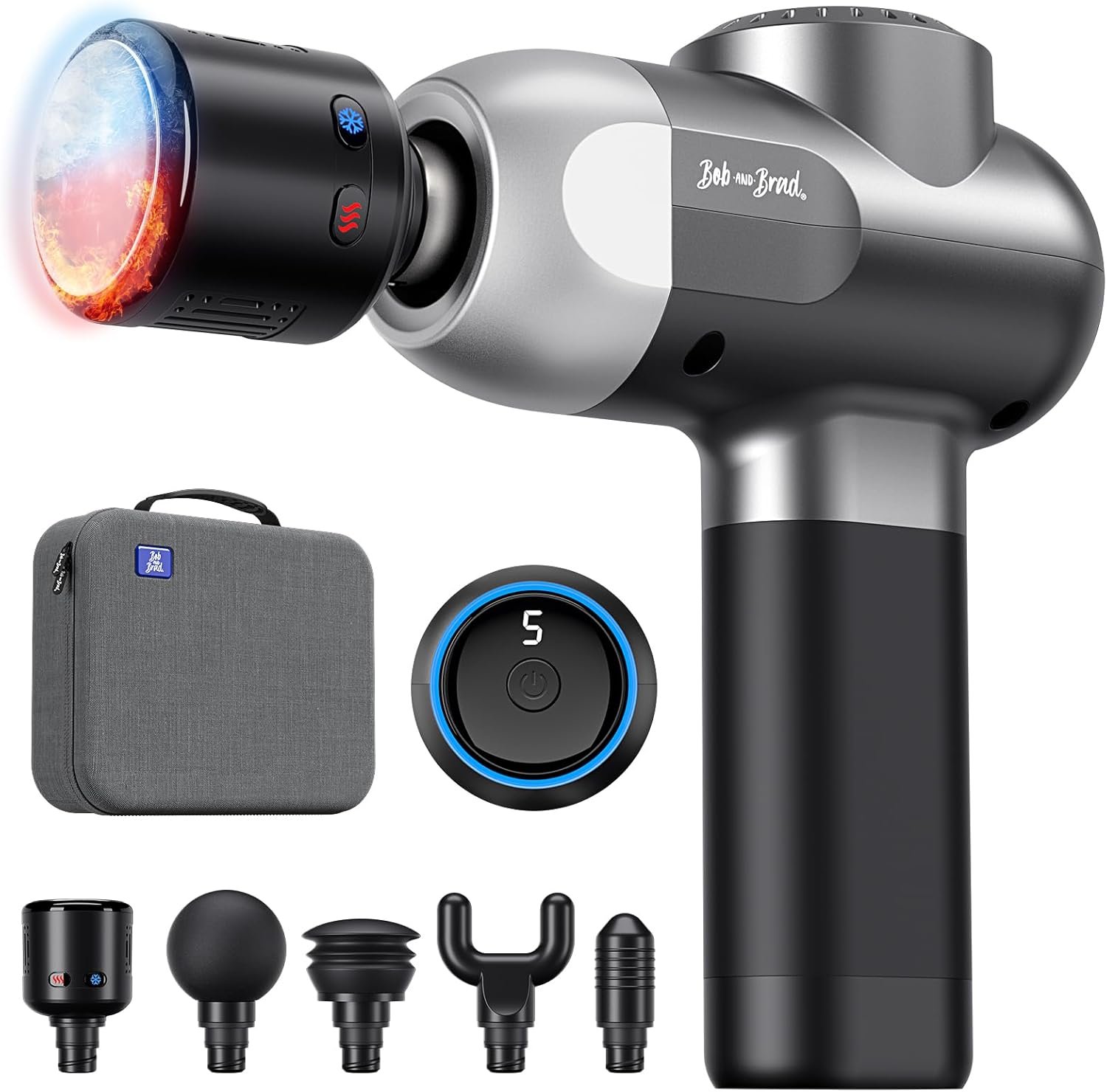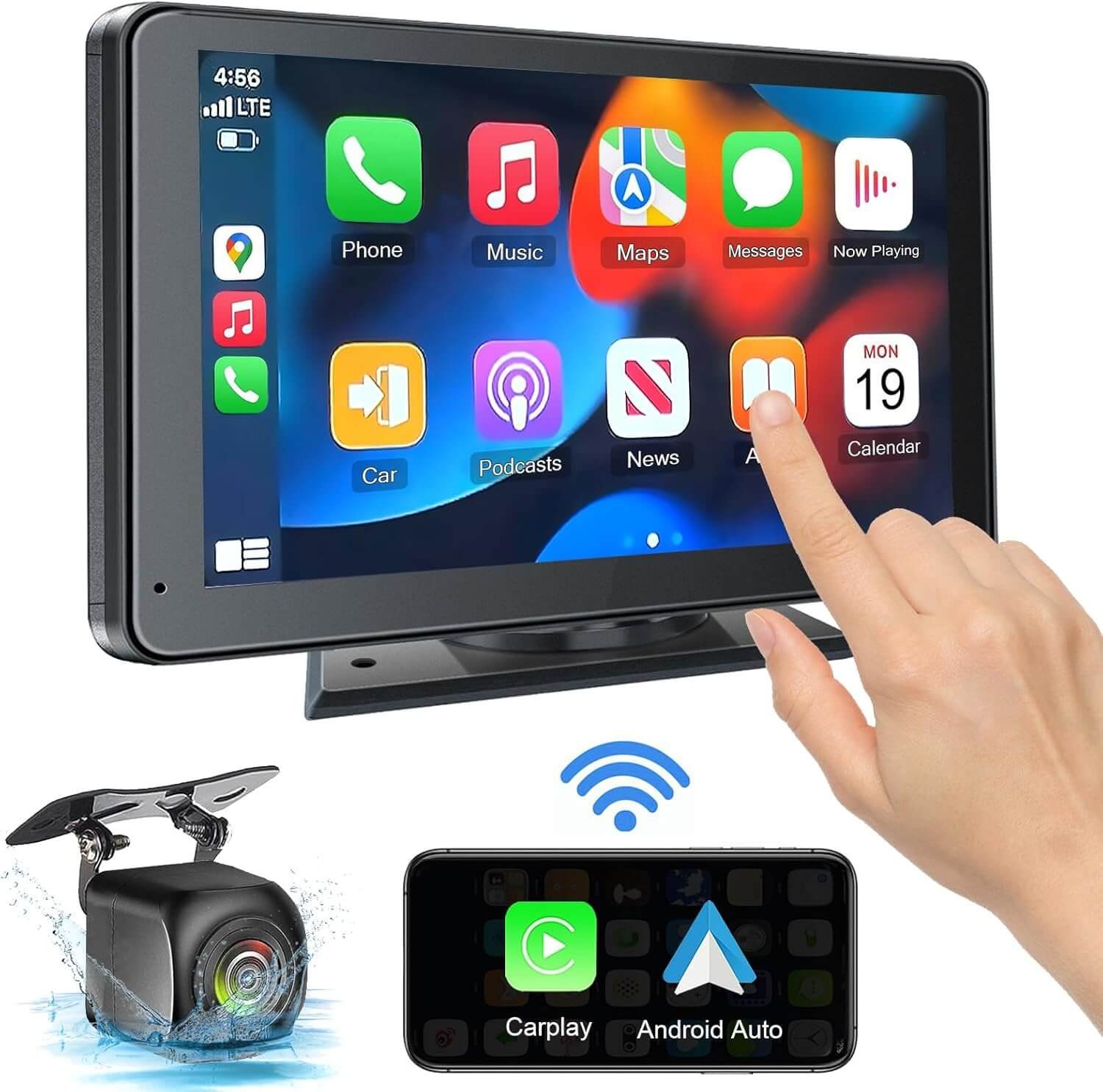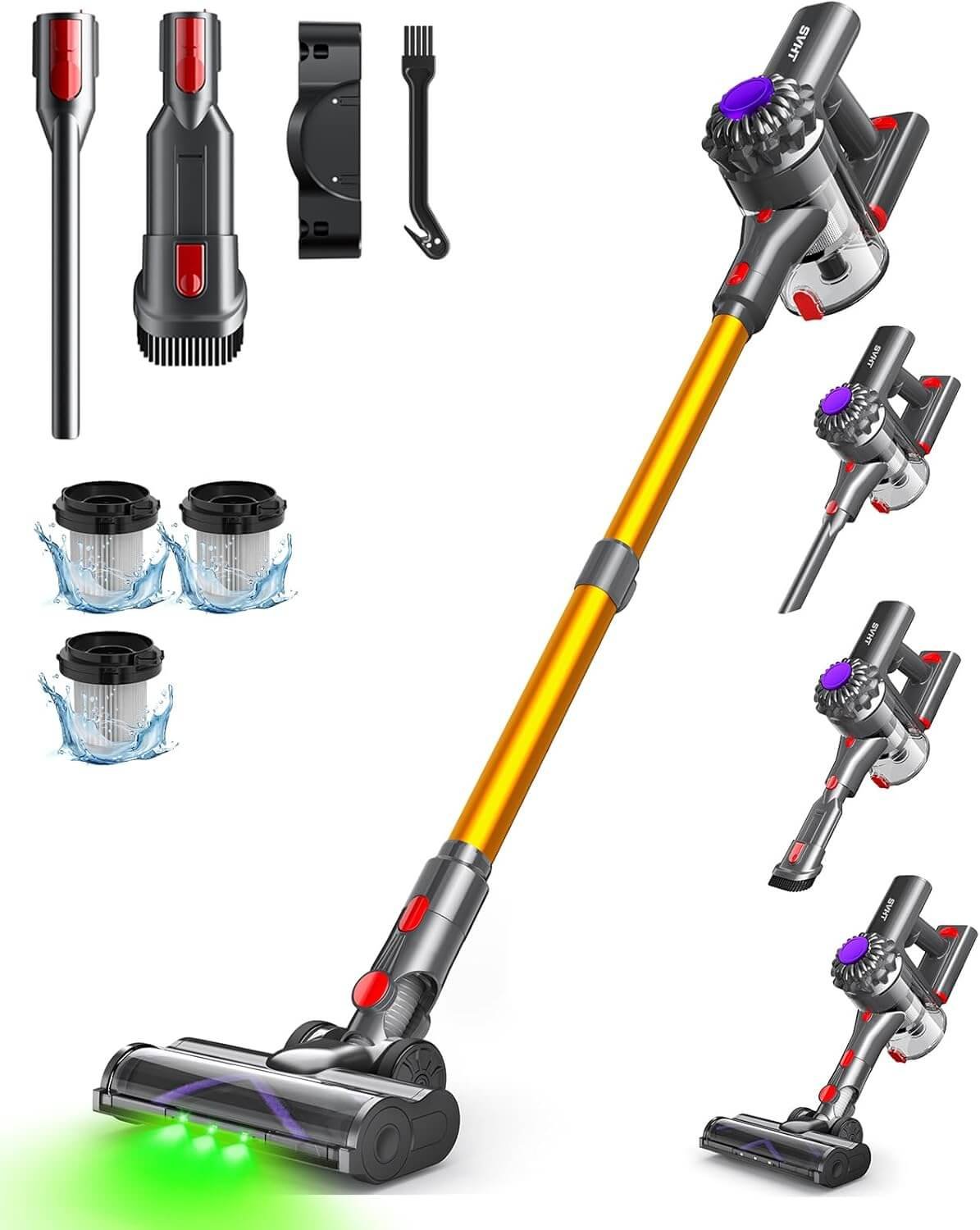Introduction to Electric and Wireless Floor Mops
In recent years, electric and wireless floor mops have emerged as essential tools in home cleaning, offering a significant advancement over traditional mopping methods. These innovative devices combine the effectiveness of mechanical cleaning with advanced technology, streamlining the process of maintaining clean floors. Unlike conventional mops that require manual effort and extensive water usage, electric mops rely on automated mechanisms to operate, drastically reducing the labor and time associated with mopping.
One of the primary benefits of electric and wireless floor mops is the convenience they provide. With their cordless design, users can easily maneuver these mops around their homes without the constraints of tangled cords or the need for nearby power outlets. This freedom allows for efficient cleaning in various environments, from hard-to-reach corners to larger open spaces. Furthermore, many electric mops are lightweight and ergonomically designed, reducing strain on the user’s body and making the cleaning process less labor-intensive.
Efficiency is another notable aspect of these modern cleaning devices. Electric mops often come equipped with features such as steam cleaning, which not only helps to sanitize surfaces effectively but can also assist in drying floors quickly—removing excess moisture that might promote mold and bacteria growth. Some models offer adjustable settings, allowing users to customize the cleaning experience to suit different floor types, such as hardwood, tile, or laminate. This adaptability further enhances their usability, making them suitable for a wide range of households and cleaning tasks.
In summary, electric and wireless floor mops represent a substantial shift in cleaning technology, providing users with efficient, convenient, and time-saving solutions for maintaining their floors. As we delve deeper into the specific features and benefits these mops offer, it becomes evident why they are increasingly favored in modern cleaning routines.
How Electric and Wireless Floor Mops Work
Electric and wireless floor mops utilize advanced technology to streamline the cleaning process, ensuring both efficiency and convenience for users. At the core of their functionality is the motor, typically powered by rechargeable batteries in wireless models, allowing for unobstructed movement across various surfaces. These mops often come equipped with powerful suction capabilities and rotating brush heads that work synergistically to dislodge dirt and debris, maintaining cleanliness without the need for extensive manual effort.
The cleaning performance of these mops is further enhanced by different types of cleaning heads. Common options include microfiber pads, which capture dust and grime effectively, and specialized brushes designed for tackling stubborn stains. Users can often choose a specific head depending on the floor type, ranging from hardwood to tile. This versatility ensures that the electric mop can adapt to various cleaning needs, making it a robust tool for maintaining home hygiene.
Automation features are another significant aspect of electric and wireless mops. Many modern models integrate smart technology, allowing them to navigate around obstacles and adjust their cleaning pattern according to the space being cleaned. Some even offer app connectivity, enabling users to schedule cleanings or monitor performance remotely. This hands-free operation significantly contributes to the overall convenience of utilizing electric and wireless floor mops, allowing individuals to manage their time more effectively while enjoying a cleaner living environment.
To better illustrate the mechanics of electric and wireless floor mops, diagrams or images may be incorporated, showcasing their components and operational features. Such visual aids can enhance understanding by providing insights into how different elements work together to achieve efficient floor cleaning.
Key Features to Look for in Electric and Wireless Floor Mops
When selecting an electric or wireless floor mop, several key features should be considered to ensure optimal performance and user satisfaction. The first feature to evaluate is battery life, as it directly influences how long the mop can operate before needing a recharge. Ideally, a mop should have at least 30 minutes of continuous runtime to cover larger areas without interruption. Relatedly, charging time is critical; quicker charging means less downtime between cleaning sessions, enhancing overall convenience.
Weight also plays a significant role in the usability of floor mops. A lighter mop is easier to maneuver, especially during prolonged cleaning sessions or when navigating tight spaces. Assessing the unit’s maneuverability is essential as well; look for designs with swivel heads that allow for easy movement around furniture and corners, making the cleaning process more efficient.
Consider the volume of the water tank, as this determines how often you need to refill during cleaning. A larger tank may reduce interruptions and help facilitate a more thorough clean on expansive floors. Additionally, various mops come with multiple cleaning modes, allowing for customized cleaning based on different surface types or levels of dirtiness. This feature greatly enhances flexibility and effectiveness, making the mop suitable for various cleaning tasks.
Lastly, examine whether the mop comes with washable pads. This not only promotes sustainability by reducing waste but also saves money on continuous replacement costs. By choosing electric or wireless floor mops equipped with these essential features, consumers can make well-informed purchasing decisions that cater to their specific cleaning needs and preferences.
Comparing Different Models: Which One is Right for You?
When selecting between electric and wireless floor mops, it’s essential to consider various models and their specific features. Each type offers distinct advantages and the suitability is influenced by factors such as floor types, cleaning frequency, and budget.
Starting with electric floor mops, one highly regarded model is the **Bissell SpinWave**. This mop stands out for its dual functionality, offering both wet and dry cleaning. Users appreciate its ability to remove tough stains from tile and laminate floors, thanks to the scrubby pads. However, it does require a power source, which may limit mobility during use. Priced moderately, this model receives positive customer reviews for durability and efficiency.
On the other hand, the **Shark Wandvac** represents the wireless category well. It is favored for its lightweight design and powerful suction capabilities. This cordless mop excels in quick clean-ups on hardwood and vinyl floors. Users find it particularly convenient for those unexpected messes. Nonetheless, battery life can be a concern, as the unit may require frequent recharging after extended use. The price point for this model is on the higher end, yet many find it justifiable for its performance.
Another notable electric model is the **iRobot Braava Jet**, which is especially effective on hard floors. This robotic mop autonomously navigates, making it a brilliant choice for those who prefer a hands-free cleaning experience. It does an admirable job on both sticky messes and daily dirt. However, being a robotic cleaner, it may not reach certain corners, which could necessitate manual intervention. Its price reflects the advanced technology incorporated into the unit.
In summary, your choice of floor mop should reflect your specific cleaning needs, budget, and floor types. Reviewing the pros and cons of various models—like the Bissell SpinWave, Shark Wandvac, and iRobot Braava Jet—can significantly aid in finding the most suitable option for your home.
The Benefits of Using Electric and Wireless Floor Mops
Electric and wireless floor mops are increasingly popular household cleaning solutions, offering numerous advantages that enhance their practicality and efficiency. One of the primary benefits of these cleaning tools is their enhanced cleaning capability. Unlike traditional mops, electric mops often feature built-in scrubbing pads that provide a deeper clean, effectively targeting stubborn stains and grime that might be missed with manual cleaning methods. This makes them an ideal choice for households with pets or children where spills and messes are commonplace.
Furthermore, the ease of use associated with electric and wireless floor mops cannot be overstated. Many models are designed with user-friendly controls and a lightweight design that allows for effortless maneuverability. Unlike corded mops that limit movement and accessibility, wireless options provide greater freedom, allowing users to clean various areas of their home without needing to plug and unplug cords continually. This convenience makes cleaning less of a chore, encouraging more consistent cleaning habits.
Another significant benefit relates to the reduction of physical strain. Electric mops often require less physical effort, as they can handle much of the scrubbing and movement tasks traditionally associated with mopping. This aspect is particularly beneficial for individuals with mobility issues or those who simply want to minimize exhaustion during their cleaning routine. By utilizing features such as steam cleaning or oscillating pads, these mops can accomplish more with less effort.
Lastly, the time-saving nature of electric and wireless floor mops contributes to a more efficient cleaning routine. With their rapid cleaning ability and ease of operations, users can complete floor maintenance quickly, optimizing their time for other crucial tasks. Overall, the integration of technology in floor cleaning tools represents a significant advancement that provides users with an effective, user-friendly, and efficient cleaning solution.
Common Issues and Troubleshooting
Electric and wireless floor mops have gained popularity for their efficiency and convenience. However, users may encounter certain issues that can hinder their performance. Understanding these common problems and knowing how to troubleshoot them can significantly enhance the user experience.
One prevalent issue is battery degradation. Wireless mops rely on batteries to operate, and over time, users may notice a decline in battery life. To troubleshoot this problem, ensure that the battery is fully charged before use. If the battery fails to hold a charge, it might need replacement. Always refer to the manufacturer’s guidance for specifics on battery specifications and replacement procedures.
Clogging is another common problem that can impact the mop’s effectiveness. Debris, hair, or dirt can accumulate in the mop’s cleaning pads or waterways, leading to reduced suction or water flow. Users should frequently check and clean the mop’s components, including the filters and nozzles. Many models come with detachable parts, making it easier to maintain adequate airflow and cleaning capabilities.
Additionally, some users report that electric mops do not clean as effectively as expected. This could be due to using the wrong cleaning solution or not applying sufficient pressure while mopping. It is essential to choose compatible cleaning products that align with the floor type being cleaned. Consult the user manual for recommendations on cleaning solutions and techniques for optimal results.
Finally, ensure that the mop is operated correctly according to the manufacturer’s instructions. Misuse can lead to performance issues and may void warranties. If problems persist, contacting customer support or consulting a professional service could provide further insights and assistance. By addressing these common troubleshooting issues, users can maximize the efficiency and convenience that electric and wireless floor mops are designed to offer.
Maintenance Tips for Electric and Wireless Floor Mops
Maintaining electric and wireless floor mops is essential for achieving optimal performance and extending their lifespan. Proper care ensures these convenient cleaning tools remain efficient, ultimately enhancing your cleaning experience. To start, the mop head should be cleaned regularly, as dirt and debris can accumulate and hinder performance. Many mop heads are machine washable; always refer to the manufacturer’s instructions for specific cleaning guidelines. If your mop head is removable, detach it after each use and rinse it thoroughly to remove any trapped dirt. This simple maintenance task can prevent the buildup of grime, ensuring a hygienic clean.
Next, it is crucial to check for wear and tear on the mop components. Regular inspections can help identify any parts that may need replacement, such as worn brush bristles or damaged mop pads. Addressing these issues proactively can greatly improve the mop’s efficiency. Additionally, if your mop utilizes a battery, follow the manufacturer’s recommendations for battery care. Periodic charging and avoiding complete battery depletion can prolong the battery’s life. Furthermore, storing the mop in a cool, dry place, away from direct sunlight, can prevent damage to both the mop and its battery.
It is also beneficial to keep the mop’s water tank or cleaning solution reservoir clean. Empty the tank after each use and rinse it out to avoid clogging and buildup of cleaning agents that can impair functionality. Consider using distilled water if your mop supports water use, as this helps reduce mineral deposits that may accumulate over time. In conclusion, incorporating these maintenance tips into your routine will ensure your electric and wireless floor mop remains a dependable cleaning ally, allowing you to enjoy the remarkable convenience it brings to your household cleaning tasks.
Eco-Friendly Benefits of Electric and Wireless Floor Mops
The growing concern for environmental sustainability has prompted many consumers to seek cleaning methods that minimize their ecological footprint. Electric and wireless floor mops stand out as viable alternatives to traditional cleaning methods, offering numerous eco-friendly benefits. One of the primary advantages of these modern mops is their reduced water usage. Unlike conventional mops, which often require buckets filled with water, electric and wireless mops utilize a fraction of the water for cleaning. This reduction not only saves a significant amount of water but also decreases the energy needed to heat water, resulting in lower energy consumption and a smaller carbon footprint.
Moreover, electric and wireless floor mops often feature reusable cleaning pads, which can be washed and reused multiple times. This eliminates the need for single-use disposable pads and contributes to reduced waste in landfills. By shifting towards durable, washable pads made from eco-friendly materials, users can further embrace environmentally conscious cleaning practices.
An additional eco-friendly aspect of electric and wireless floor mops is the option to incorporate environmentally friendly cleaning solutions. These mops can effectively clean surfaces with non-toxic, biodegradable cleaners, eliminating harsh chemicals that contribute to indoor air pollution and harming aquatic ecosystems when washed down the drain. Many manufacturers design their devices to be compatible with such eco-friendly products, enabling households to minimize their environmental impact without sacrificing cleanliness.
Incorporating electric and wireless floor mops into a cleaning routine allows consumers to embrace a more sustainable lifestyle while enjoying the benefits of modern technology. They provide an efficient cleaning solution that significantly reduces water consumption and waste, promoting both a cleaner home and a healthier planet.
Conclusion
As we have explored throughout this guide, electric and wireless floor mops represent a significant advancement in domestic cleaning technology, providing both efficiency and convenience. Traditional mopping methods often involve cumbersome equipment, tedious scrubbing, and concerns over the efficacy of hygiene practices. In contrast, electric floor mops are designed to tackle these challenges head-on, utilizing a variety of innovative features that enhance the cleaning process.
The adoption of electric and wireless floor mops not only reduces the physical exertion required for cleaning but also increases the speed and effectiveness of the task. Wireless models liberate users from tangled cords, allowing for seamless movement across spaces, while electric options elevate the cleaning process through advanced steam cleaning capabilities and dual-action scrubbing. These features contribute to a thorough cleanse, promoting a healthier living environment.
Moreover, the ergonomic designs of many electric floor mops aim to minimize user strain, ensuring that even rigorous cleaning sessions can be conducted with ease. The ability to adjust cleaning modes based on different floor types also illustrates the versatility of these devices, catering to the diverse needs of homeowners. Transitioning to electric and wireless floor mops, therefore, not only modernizes the cleaning experience but also empowers users to maintain cleaner and more hygienic living spaces with less effort.
Overall, as we weigh the benefits of adopting electric and wireless floor mops, the case for making this switch becomes increasingly compelling. For those looking to enhance their cleaning routine, the integration of such advanced tools signals a step forward in household efficiency. Embracing this technology holds the promise of a pleasant and productive cleaning experience that aligns with contemporary lifestyles.






















![Breville One-Touch CoffeeHouse Coffee Machine | Espresso, Cappuccino & Latte Maker | 19 Bar Italian Pump | Automatic Milk Frother | ESE Pod Compatible | Black [VCF107]](https://product-reviews-today.com/wp-content/uploads/2025/05/Breville-One-Touch-CoffeeHouse-Coffee-Machine.jpg)




